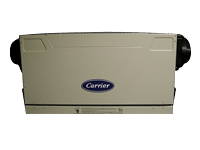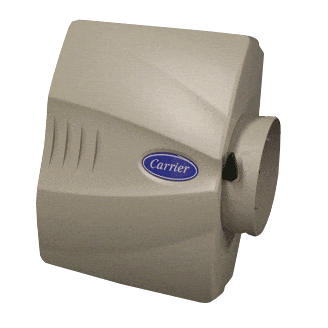Energy Recovery Ventilators (ERV)
RESIDENTIAL SERVICESVentilators will help protect your home and your Family

Today’s homes eliminate nearly all wasteful air leaks, helping to control energy costs. Because homes are air tight, pollutants are trapped indoors. The health hazards from indoor air pollutants are broadly recognized as one of today’s top environmental hazards.
Energy Recovery Solutions
- Energy Recovery Solutions

Model Varies depending upon needs
Excess Moisture Can Damage Your Home.
Breathing, showering and cooking are just a few ways that moisture is generated in your home (about one gallon per person, everyday). When that moisture is trapped in your home, the result can be “sweaty windows” and other moisture damage such as rust, mildew, mold and odor. Structural damage from excess moisture is often the easiest to spot – heavy condensation on windows, water damage on window sills and molds forming in cold corners of the home.
Ventilation Protects Your Home From Extremes in Humidity
Intermittent excessive humidity can be controlled with ample exhaust ventilation. Intermittent sources of humidity include bathing and showering, cooking and dish washing and clothes washing. These humidity producing activities are generally of short duration and can be controlled using ceiling mounted ventilation fans or a centrally ducted exhaust system. When air is exhausted from a home, an equal amount of outdoor air must replace it. Caution should be exercised with any exhaust-only approach to insure that associated negative pressure will not cause back drafting of combustion appliances and the introduction of uncontrolled outdoor air through building materials.
Poor Ventilation May Be Harmful to Your Family’s Health
Indoor air pollution is the uncomfortable or unhealthful presence of high levels of pollutants. Lingering odors may simply be a daily annoyance. Formaldehyde and other Volatile Organic Compounds (VOC’s), cigarette smoke, radon, household cleaners, even perfumes can threaten health. Protect your family from the health problems that are associated with:
- Carbon Dioxide (CO2) – can cause headaches, drowsiness and reduce mental acuity
- Smoke – can cause irritated eyes and respiratory problems like bronchitis and pneumonia
- High Humidity – promotes asthma, encourages fungal growth and house dust mites
- Formaldehyde – can cause headaches, sore throats, respiratory, eye and skin irritations, sinus problems, nasal congestion, hearing loss, arthritis, depression and memory impairments
- Ammonia – can cause eye, nose and respiratory tract irritation
- Radon – is an invisible, odorless gas that can seep into homes from the ground, and in time can cause cancer
- Volatile Organic Compounds – many building materials including paints, carpets and adhesives contain substances that outgas and can cause allergic reactions.

The Core
In the energy exchange core, the exhausted stale air and the fresh ventilation air pass through multiple air passages separated by an engineered composite resin partition plate. Sensible heat transfers from the warm to the cool air stream. Also, latent energy (water vapor) transfers from the wet to the dry air stream. The fresh incoming air is automatically pre-heated or pre-cooled depending on the season. This dramatically reduces the energy costs of ventilation. This unique moisture transfer feature of the energy exchange core also eliminates condensate and frosting in most applications. No mechanical or electrical defrost systems are needed, which means higher heat recovery efficiencies, simpler installation and more reliable operation.
During the Heating Season
Outdoor air is warmed close to room temperature with heat that would otherwise be lost with the exhaust air. The water vapor transfer moderates extremes in humidity levels which helps prevent moisture damage or over-drying of the home. The heat and humidity transfer (sensible and latent energy) gives the ERV a big advantage over other air-to-air exchangers typically recovering 30% more energy in winter.
During the Air Conditioning Season
When you need to cool for comfort? Do you hate the stuffy, musty air quality in your home? The ERV’s provide necessary fresh air while pre-cooling and pre-dehumidifying this air with energy that would otherwise be lost with the exhaust air. With summertime humidity control (latent energy) being the largest portion of air conditioning cost, the ERV’s humidity transfer is critical. In fact the ERV is typically three times more energy efficient than products that transfer only heat.
Temperature Control

Thermostats have come a long way since the days of the old mercury bulb thermostats. Thermostats today are digital and provide the homeowner with more information. Communicating controls even “talk” to your equipment and will notify you of any problems with your heating or cooling system.
Air Cleaners

Study after study shows that as homes become tighter and more energy-efficient, more contaminants become trapped inside. The air we breathe in our homes is loaded with pollutants like pollen, lung-damaging dust, pet hair, dander, dust mites, tobacco smoke, spores, disease-causing bacteria, and viruses.
Humidifiers

According to medical experts, many viruses thrive in low humidity – increasing the likelihood of catching colds, flu and upper respiratory ailments. The American Society of Otolaryngology even reports that it is important to prevent an overly dry environment because it makes people more susceptible to infection.
Whole House Dehumidifiers

Central dehumidifiers pull air from every room in your home and removes the moisture and then sends dry air back throughout your heating ducts. It works in conjunction with your air conditioner to efficiently balance the humidity levels in your home.





